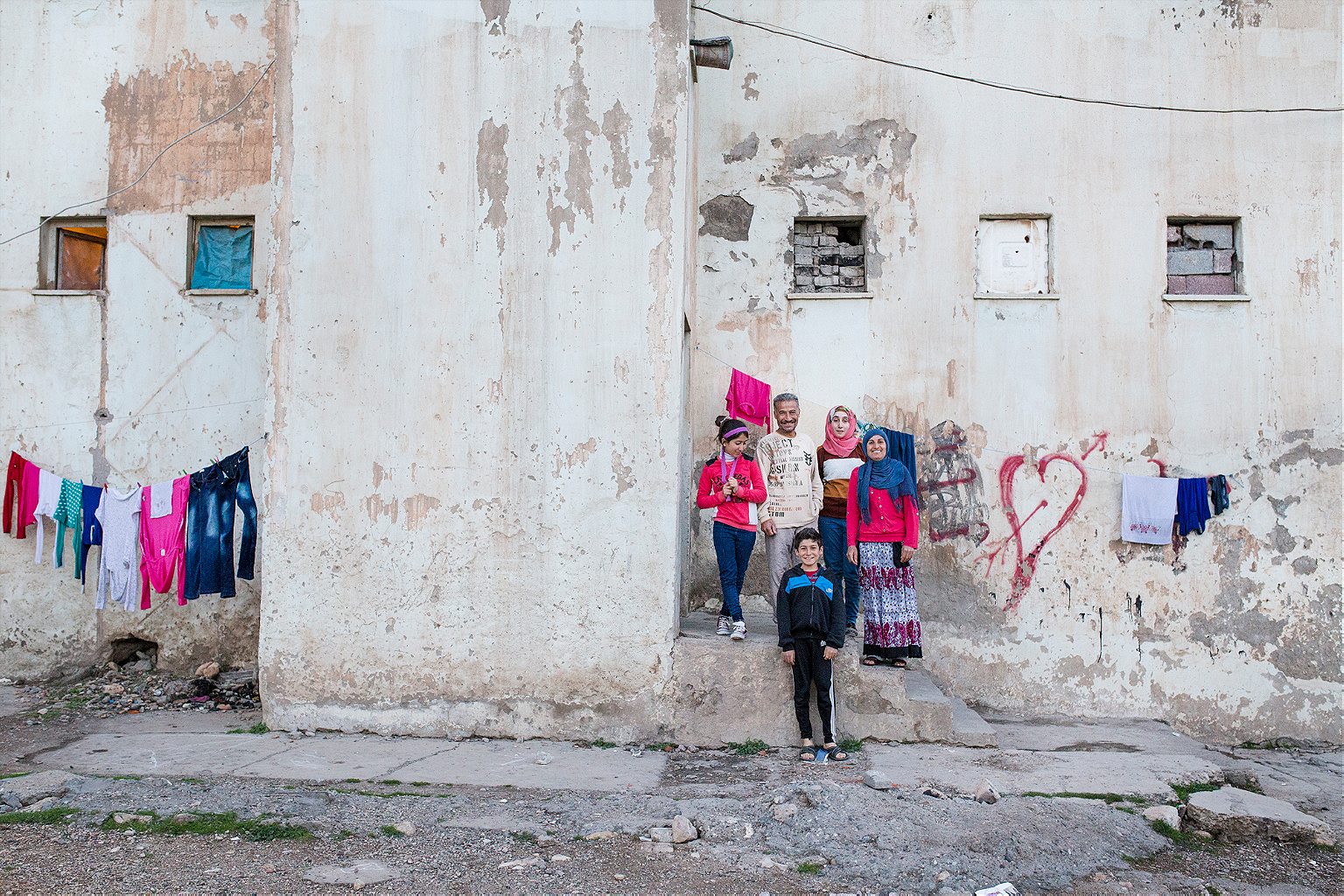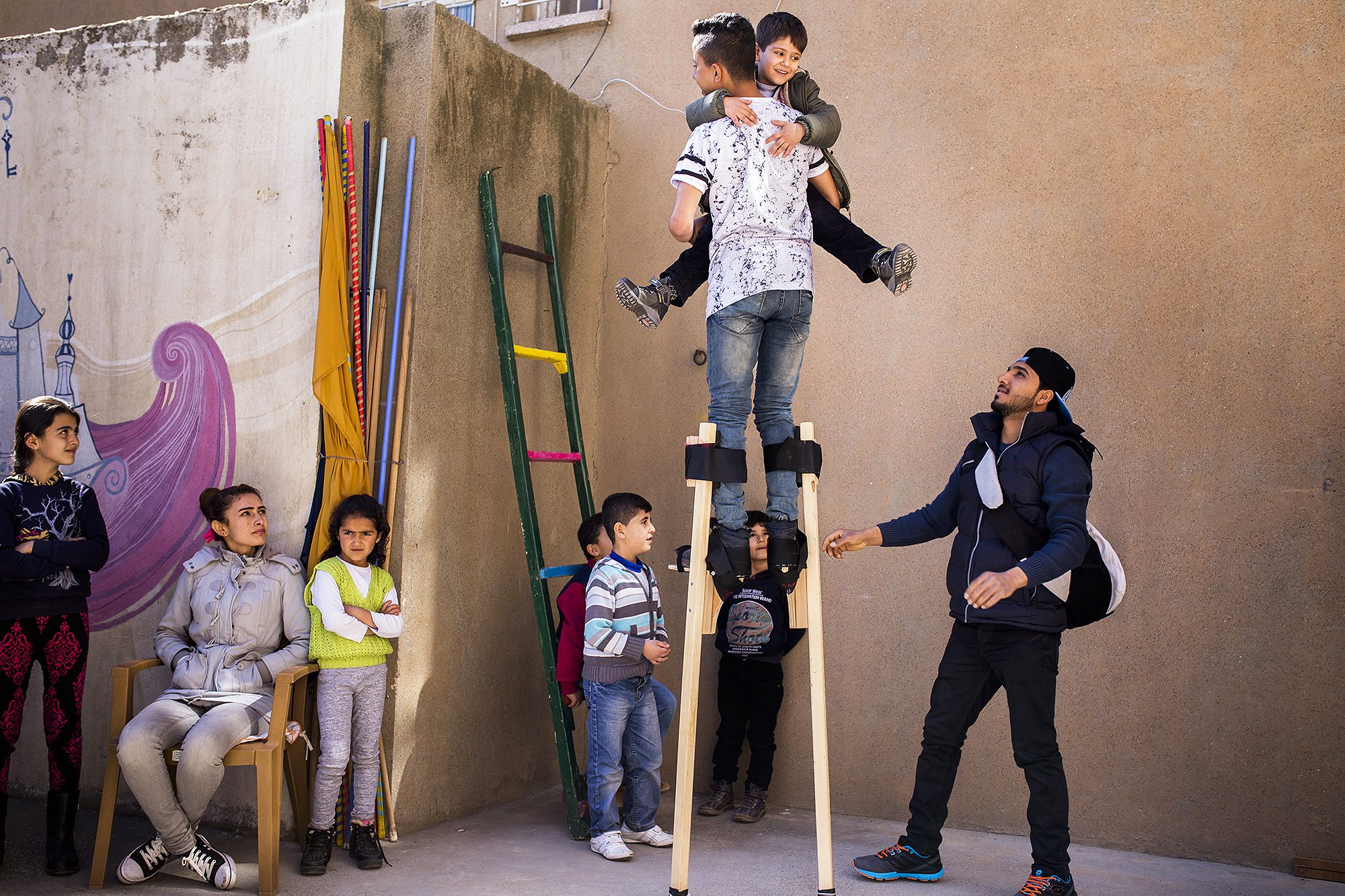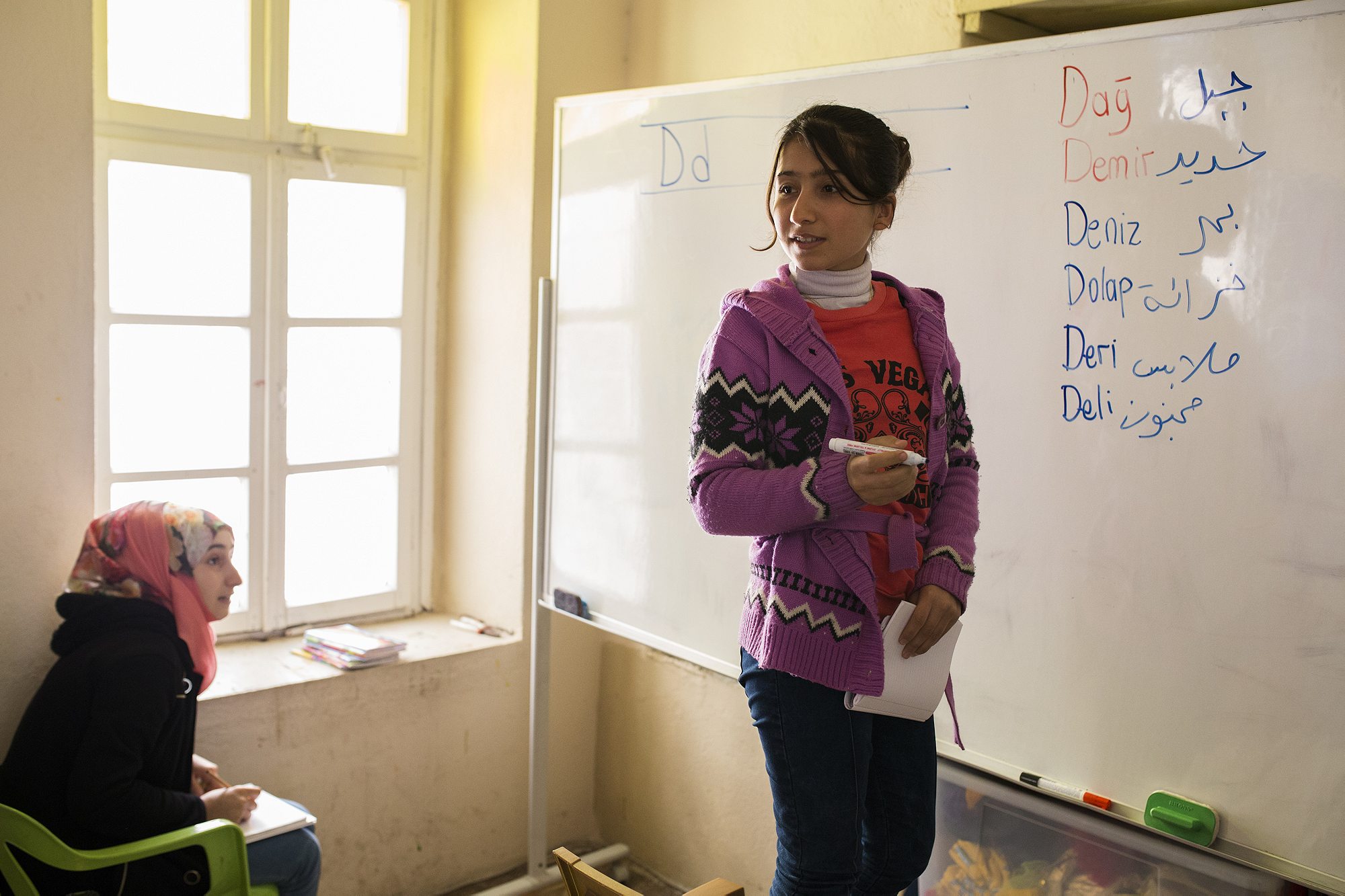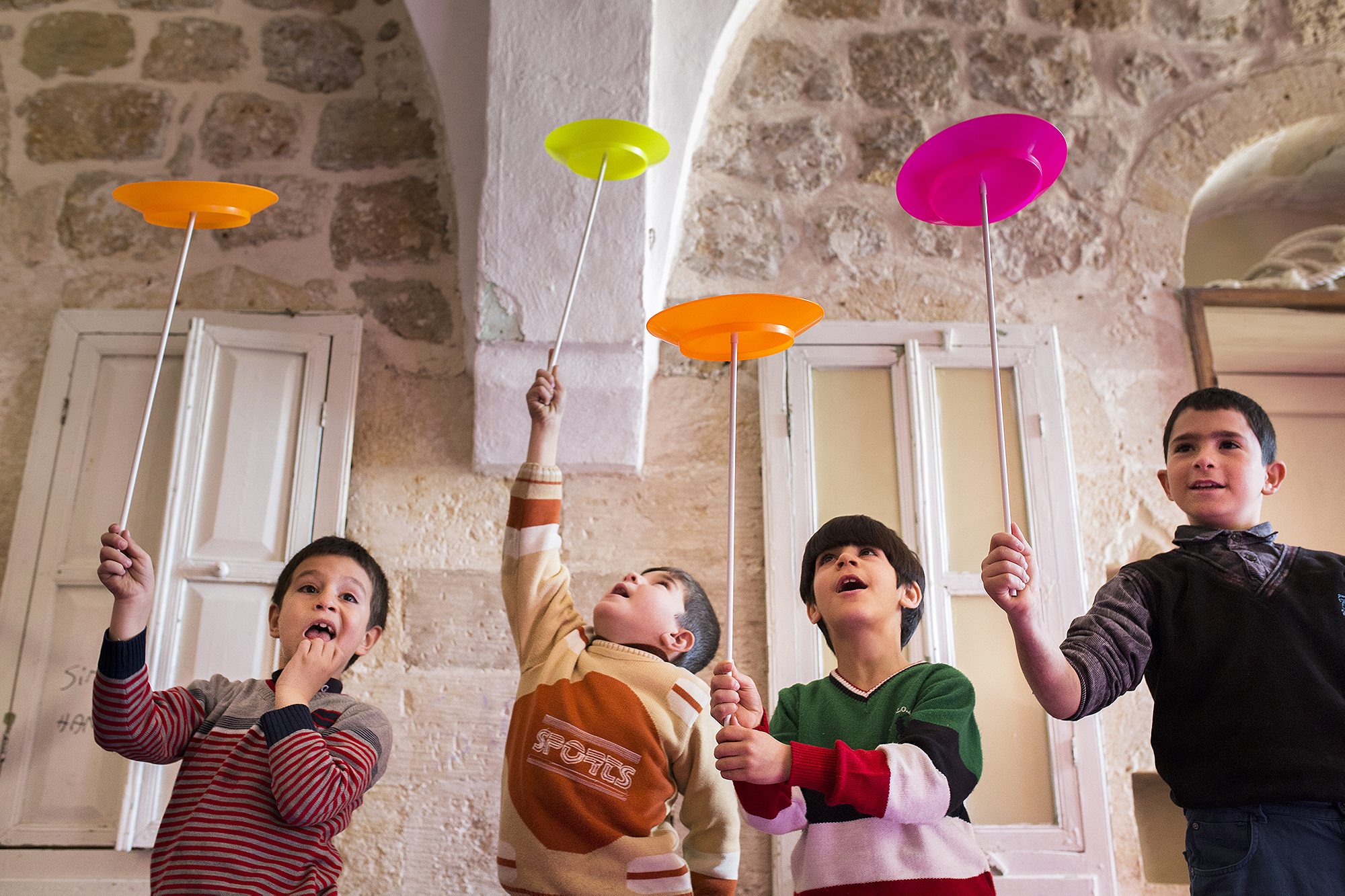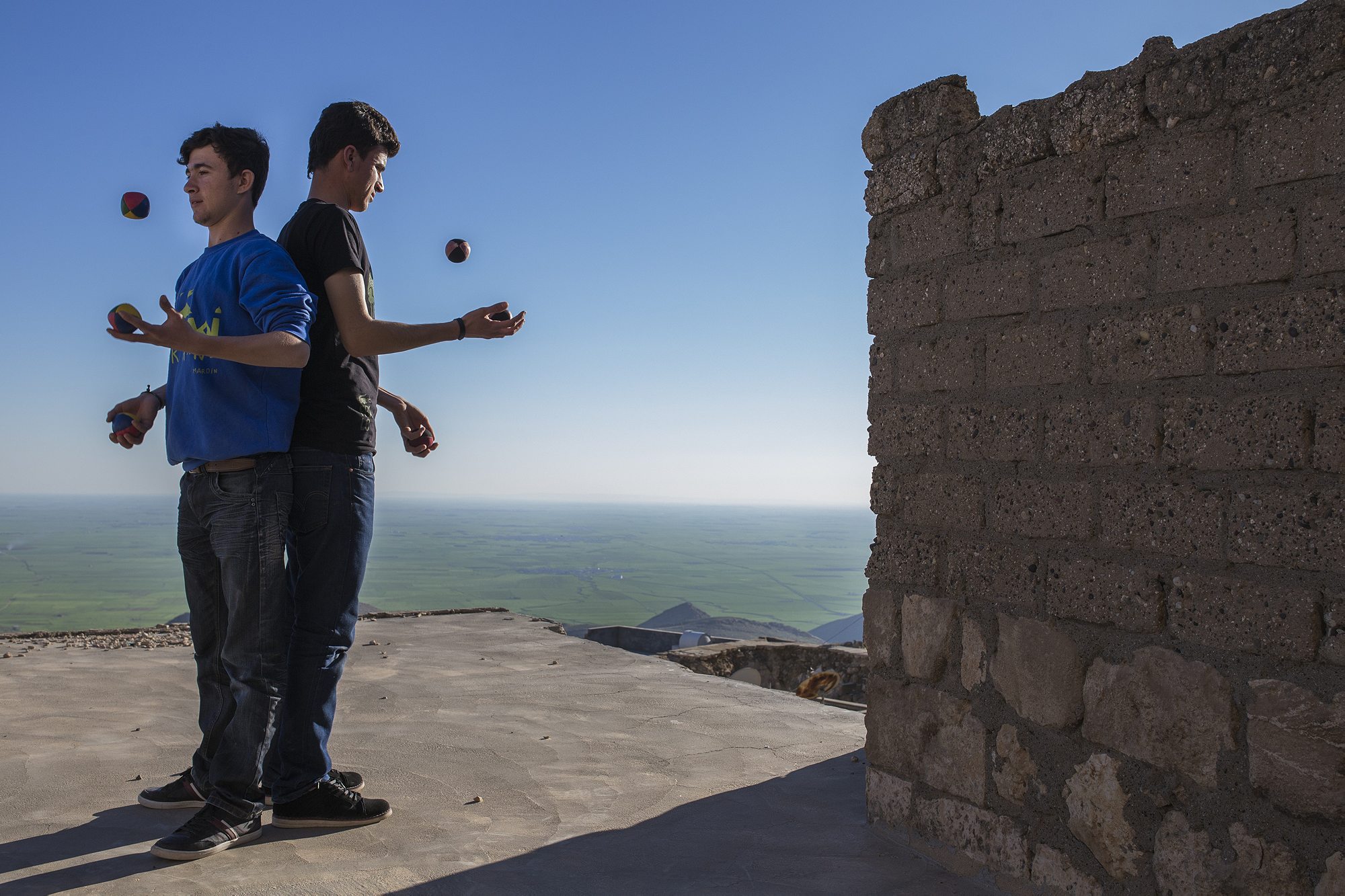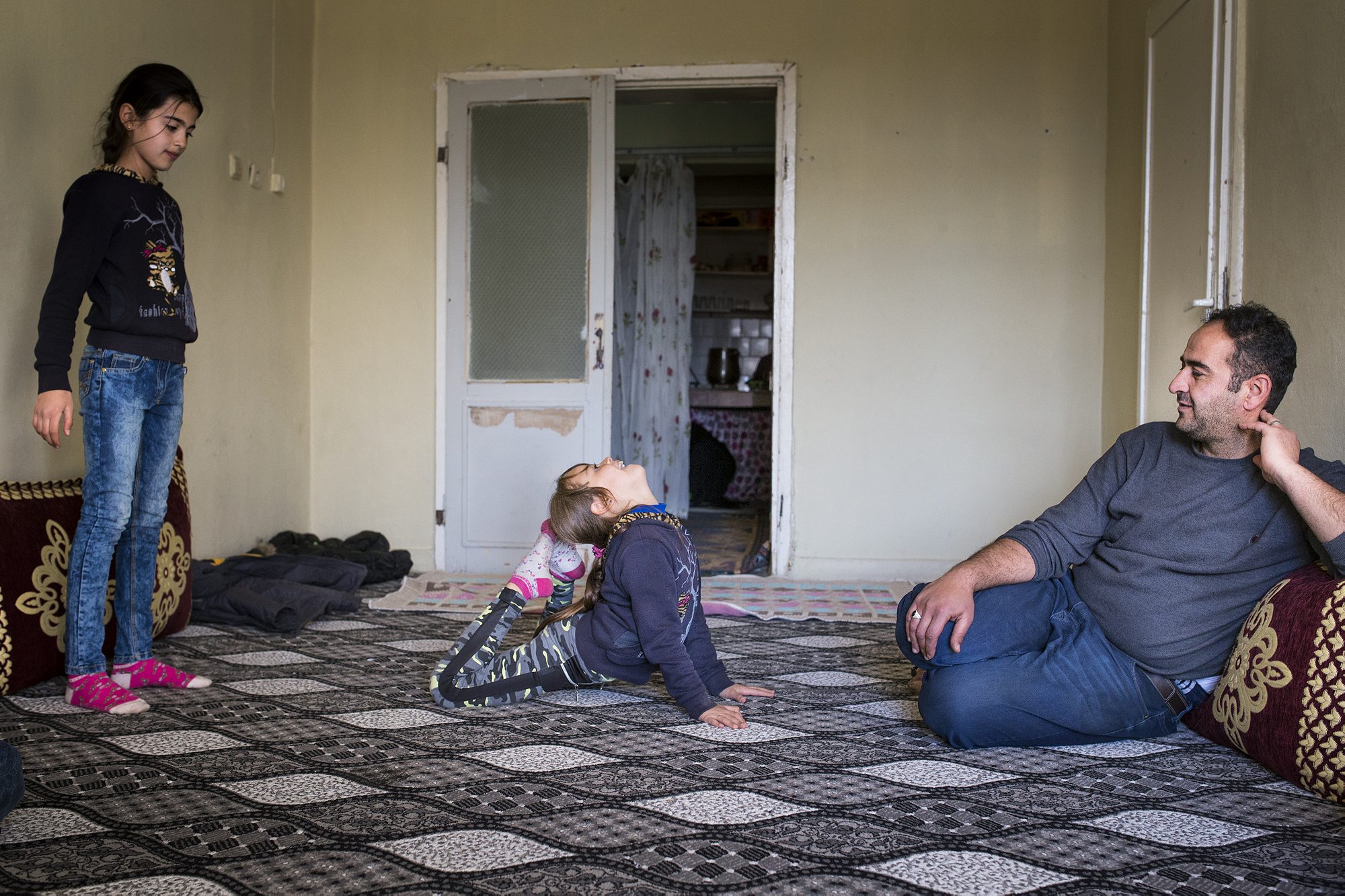In southeastern Turkey, young Syrian refugees are juggling, trapezing and stilt-walking toward self-confidence.
You can see Syria from the highlands of Mardin. Though it’s now closed, this is the border that thousands of refugees have crossed to get to safety in the past four-and-a-half years. Many have moved on since, but more than 100,000 Syrians have made a home here, in southeast Turkey.
With its narrow alleys and stone staircases, the town of Mardin overlooks the green Mesopotamian valley. Assyrians, Mongols, Armenians, Egyptians and Turks have lived within its ancient walls since the Third Century. Today, Mardin is a rare example of cohabitation between Muslims, Jews, Christians and Yazidis. The Ulu mosque was once the Church of St Thomas, and it’s frequent to hear a conversation started in Turkish being finished in Arabic or Kurdish, or to see a Christian and a Muslim converse around a tea or a beer.
The neighborhood of Station sits on the town’s periphery, on the road that leads to the airport and a bit further, to the border with Syria. Children play on the abandoned train track that cuts through a group of crumbling buildings where they live. With little to do but work and wait for the day they can return home, these young refugees have few distractions. The founders of Her Yerde Sanat, though, are trying to change that.
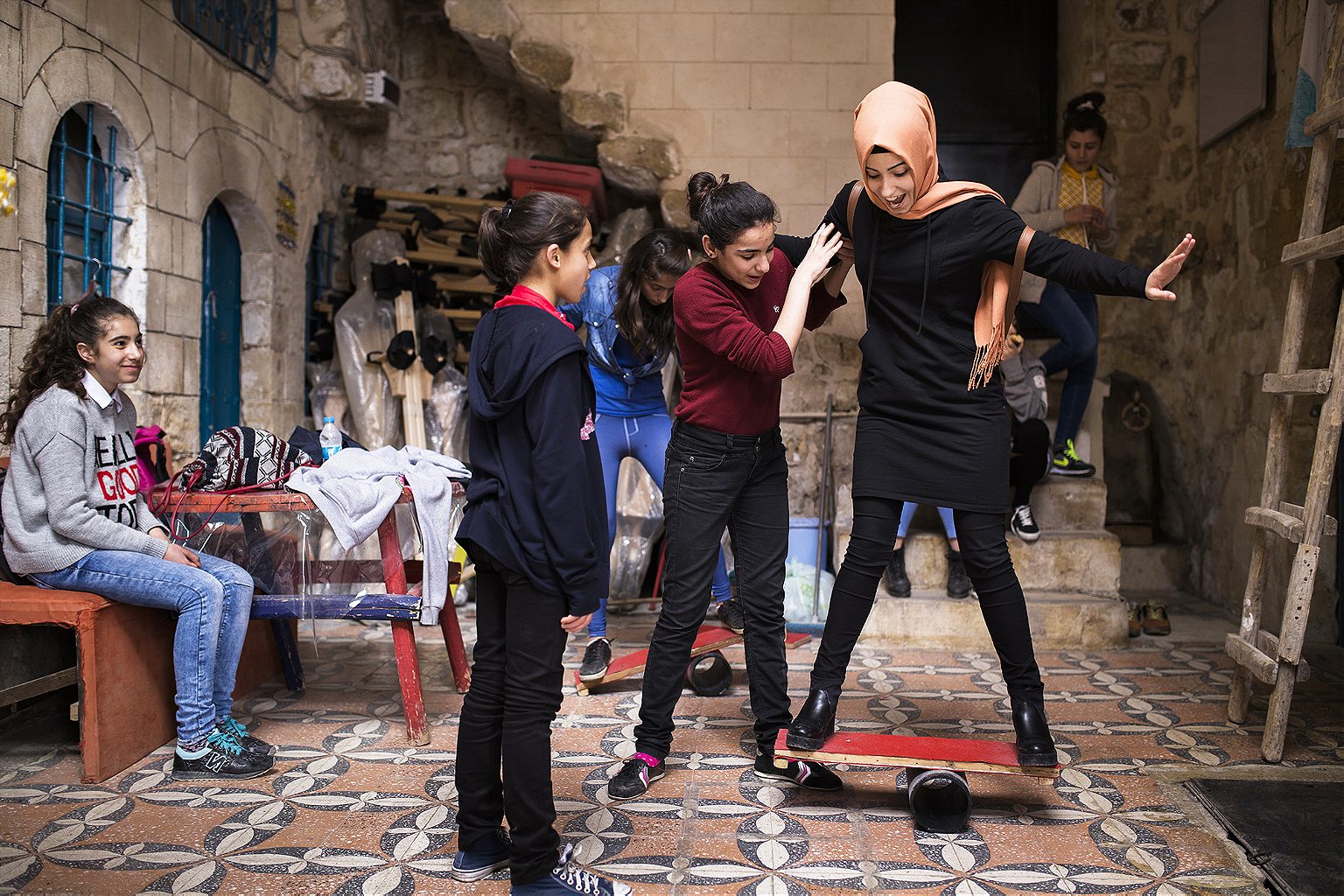
A cultural education can pull children out of their refugee status
Created by Pinar Demiral and Serdal Adam in 2011, the circus school, whose name translates to “Art Everywhere,” teaches juggling, stilt walking, and the trapeze, as well as Arabic and Turkish language. It was designed as a place to share and learn, offering a “normal” lifestyle to kids who have lost everything.
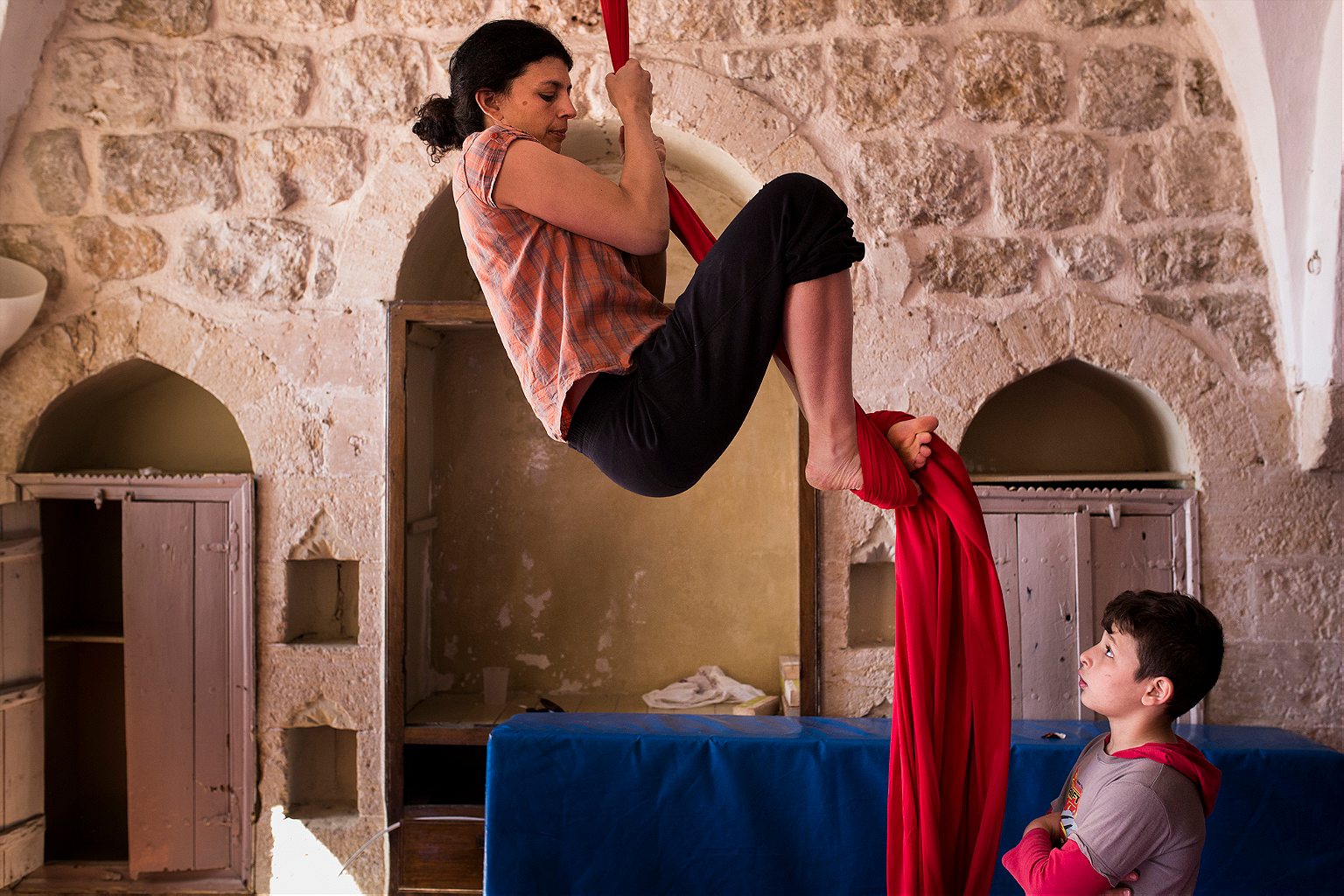
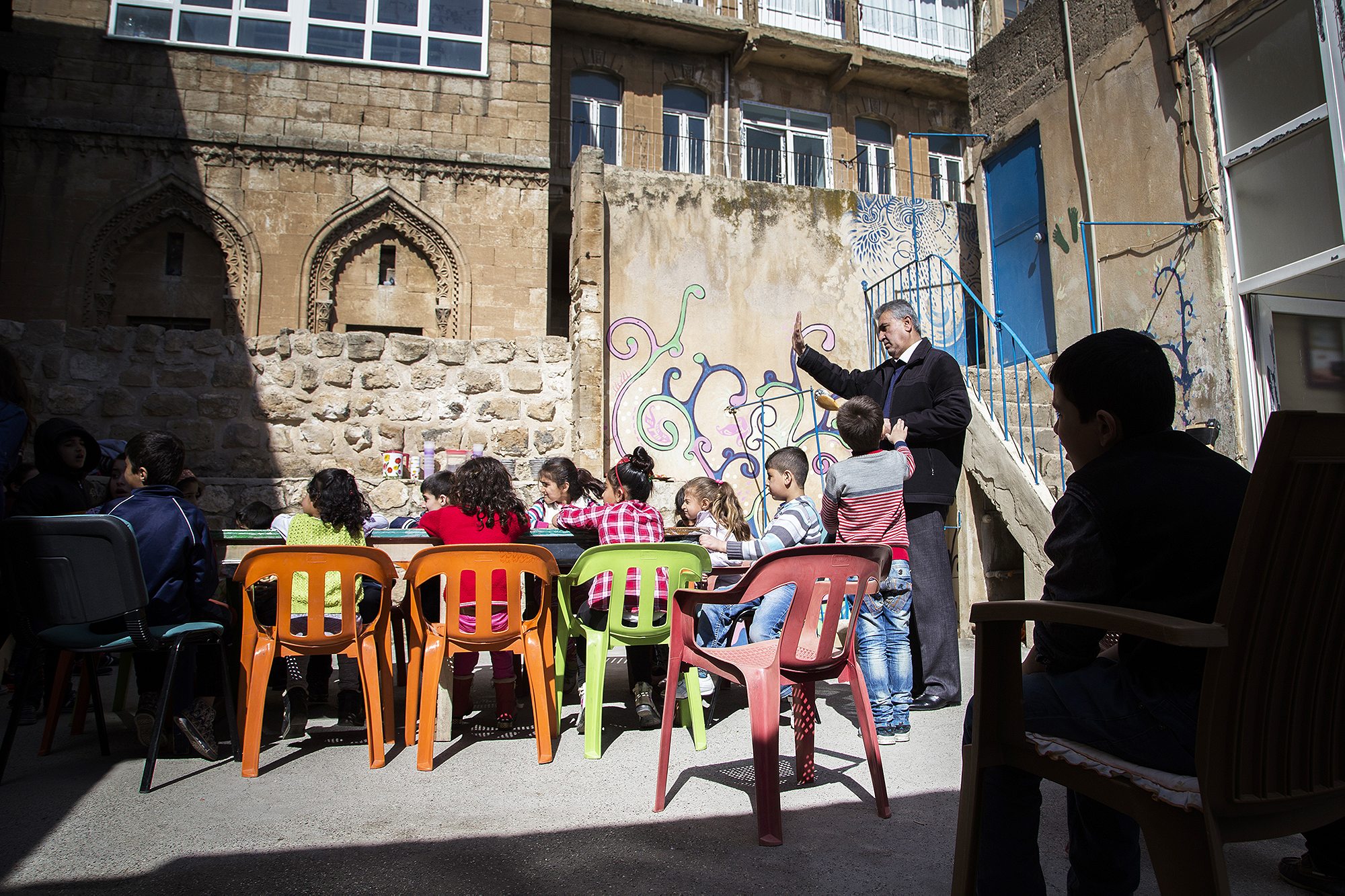
Many refugee children can’t go to public school here because they don’t speak the language or they have to work to support their families. Here, teachers speak Kurdish and Arabic and activities are available in the evening time. The idea is to fill in the gaps left by humanitarian organizations working in the region. According to Her Yerde Sanat’s founders, a cultural education can pull children out of their refugee status by giving them a space to build confidence.
Over 2.5 million Syrian refugees live in Turkey today. As the conflict drags on, those who remain in the country now have to address issues that will affect them in the longer term. When it comes to education and self-development, the circus school of Her Yerde Sanat is a small step in that direction.
